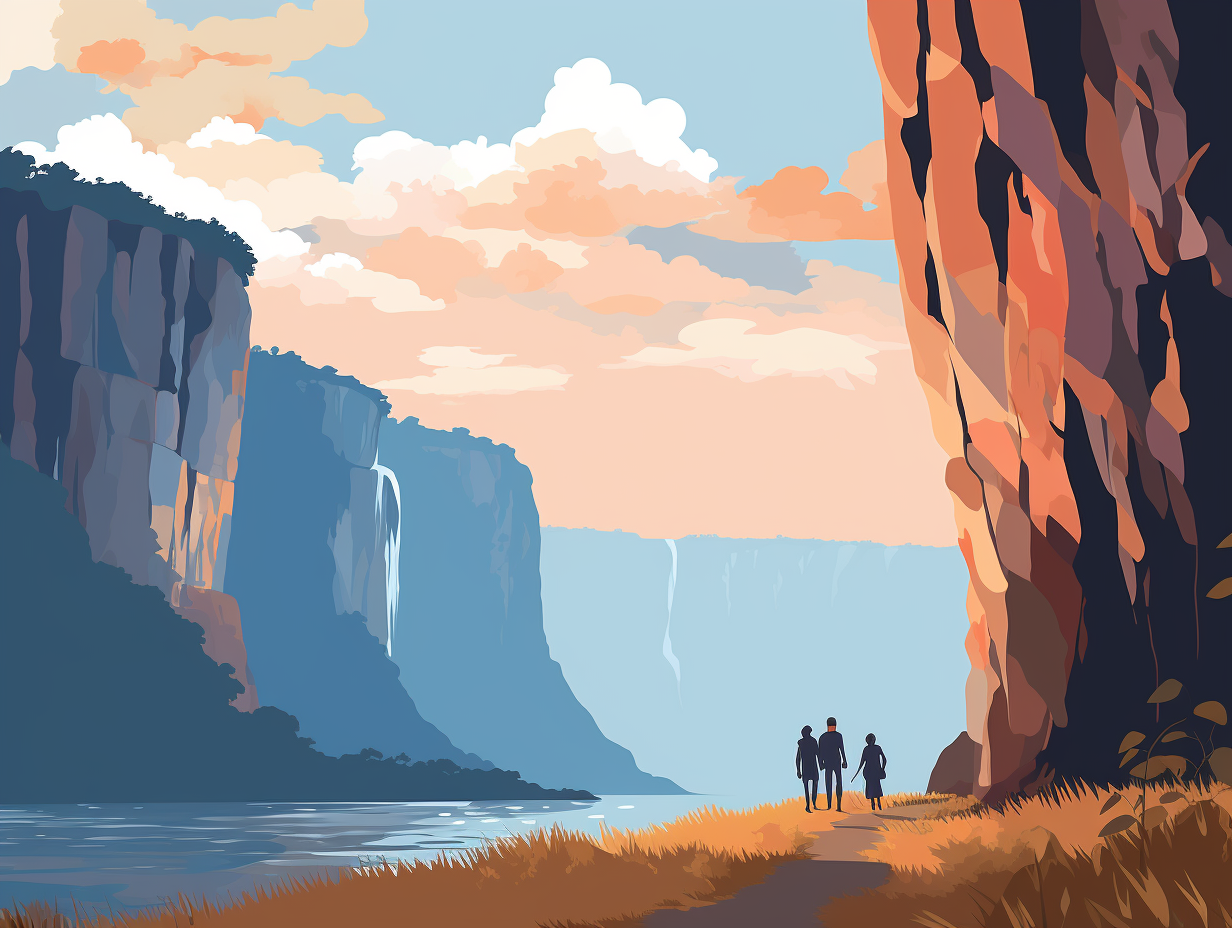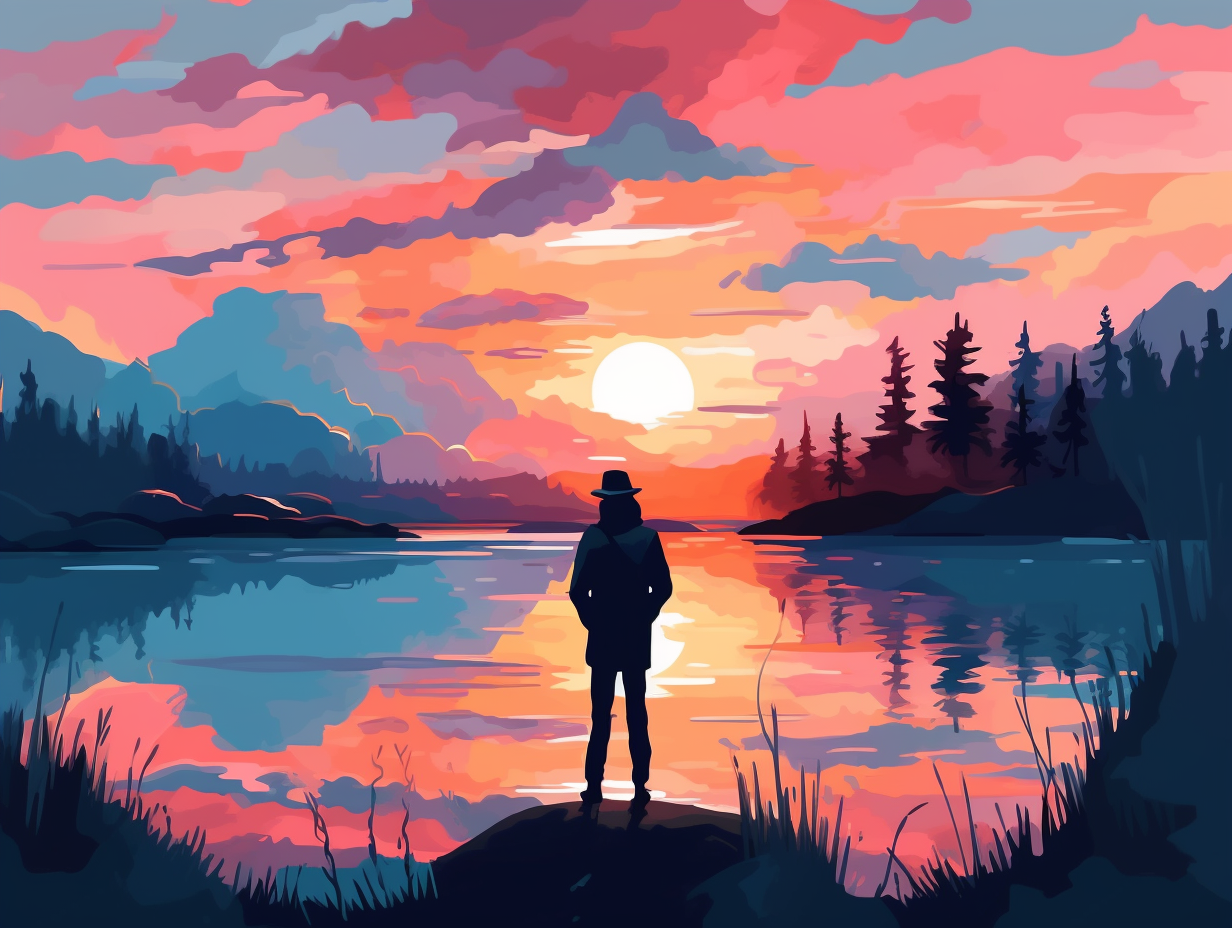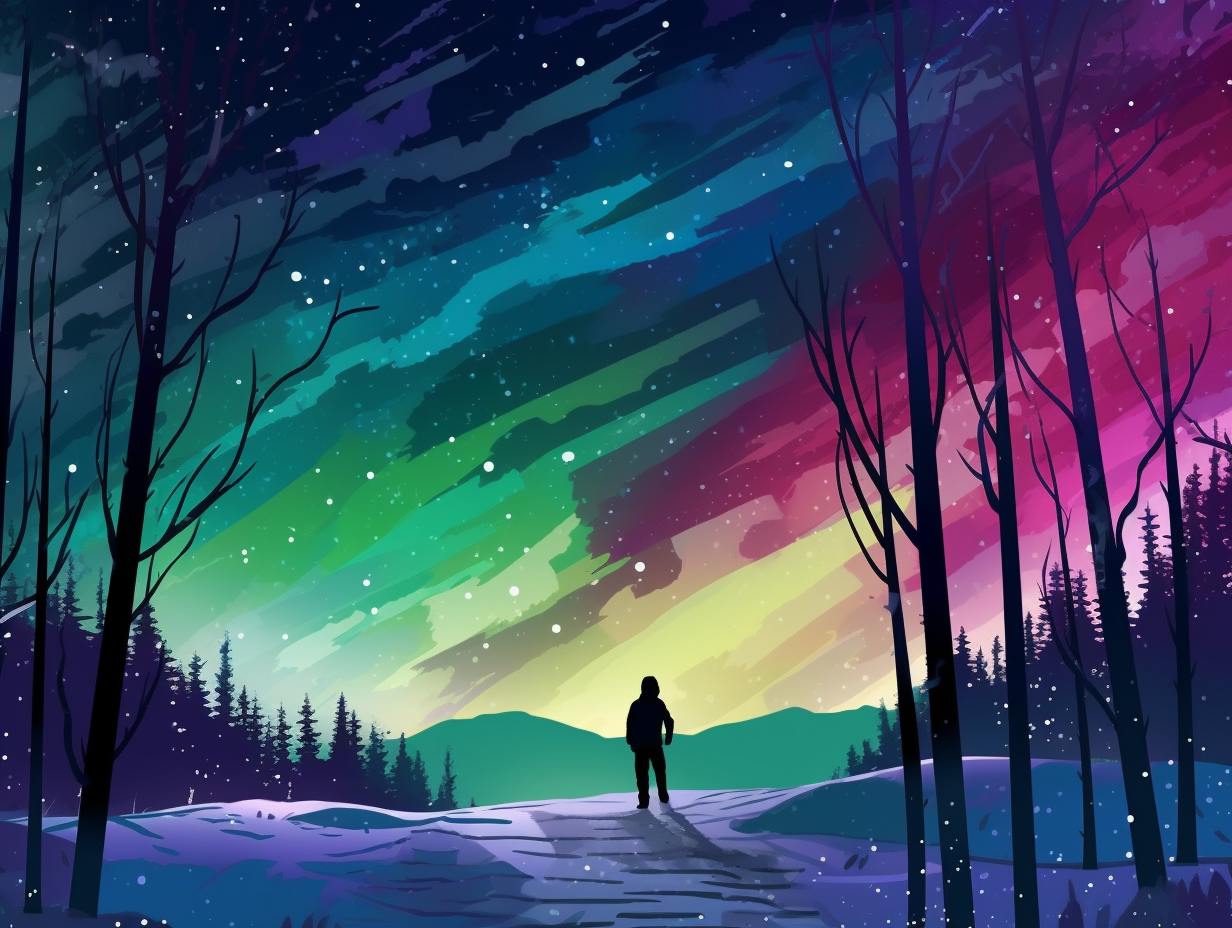Discover the Magic: Top 13 Fun Facts About the Northern Lights You Won't Believe!

1. Viking Ancestral Light Show
Calling all Viking spirits! Ever wondered if those ancestral souls found a way to communicate through the art of celestial disco? Well, things are about to get lit: Some scientists believe that the Northern Lights could have been visible to ancient civilizations, including the Vikings, who might have interpreted the dazzling sky show as a connection to their dearly departed, although there is no solid evidence to back this idea as the first recorded observations of the Northern Lights didn't happen until the 17th century.
Source => global.hurtigruten.com
2. Not Your Average Tie-Dye Colors
Next time you're eagerly gawking at nature's psychedelic light show in the sky, don't expect to recreate your favorite purple or yellow tie-dye shirt: The Northern Lights are not commonly seen in yellow or purple hues. These jaw-dropping colors are determined by atmospheric gas and the energy of particles, mainly nitrogen and oxygen, with nitrogen causing blue and deep red displays and atomic oxygen resulting in green and red spectacles.
Source => webexhibits.org

Dive into Crater Lake's crystal-clear waters and experience record-breaking underwater visibility of up to 143 feet – it's like having x-ray vision! Discover the secret behind its unmatched purity.🌊⚡
=> Fun Facts about Crater-Lake
3. Finnish Fire Fox Light Show
Whoever said "what does the fox say?" clearly hasn't met the Finnish Arctic foxes who are busy painting the skies with their tails: In Finnish mythology, the Northern Lights, or aurora borealis, are said to be created by these fire foxes or revontulet that dash across the sky, whipping up snowflakes with their tails which then catch the magical moonlight, resulting in the mesmerizing light show that can only be seen during snowy winter nights.
Source => hurtigruten.com
4. Aurora: Earth's Supervillain
Who said Earth's light show doubles as a supervillain? The northern lights, dancing gracefully in the night sky, pack a surprising punch: These beautiful geomagnetic displays can pose a danger to both astronauts and technology, as intensified solar radiation can interfere with GPS systems, power grids, and even change the paths of satellites, leading to a cosmic conundrum for scientists when trying to predict these electrifying events.
Source => scientificamerican.com
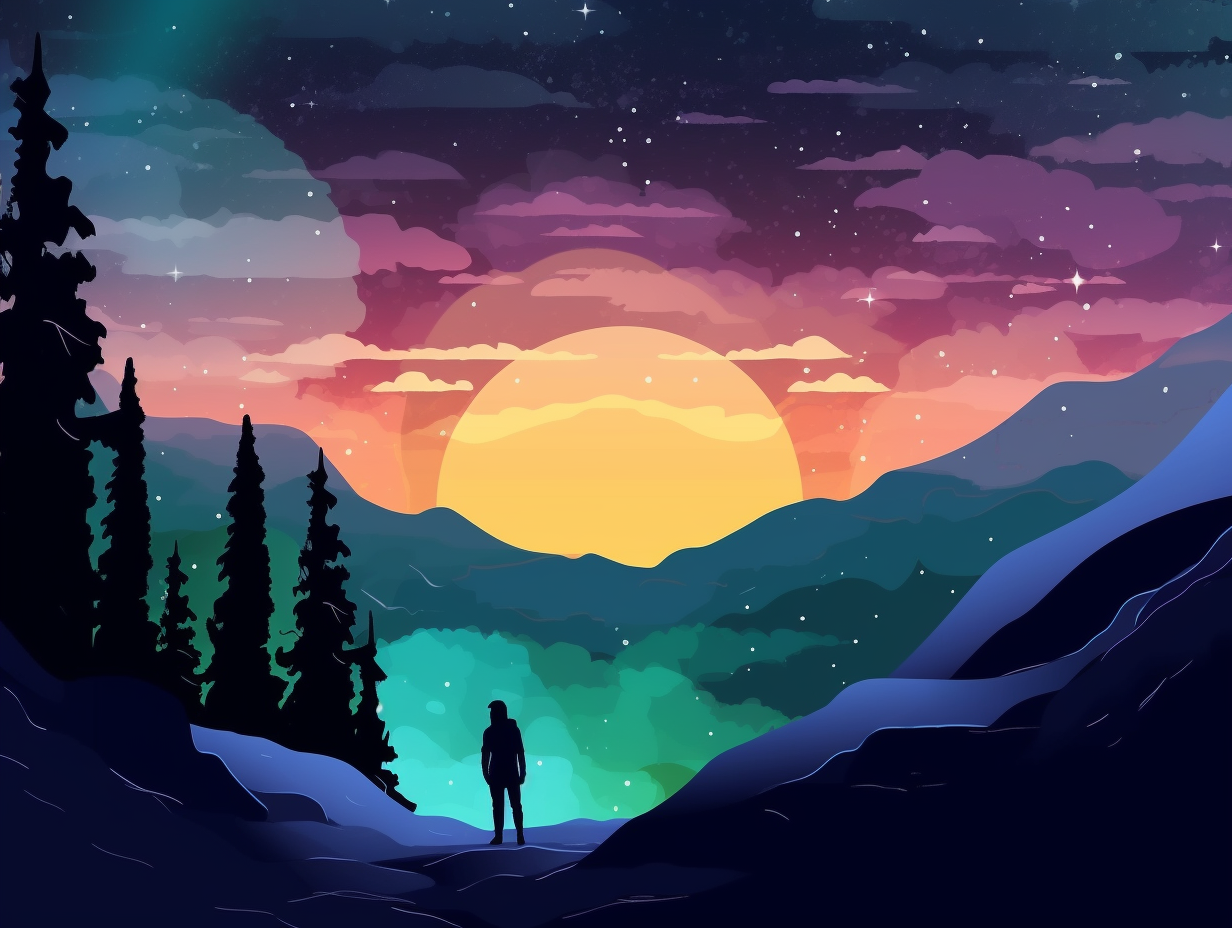
5. Equinox Light Rave Party
If Mother Nature had her own rave party up in the sky, it would surely be more lit during the equinoxes: This is because the Earth's magnetic field aligns perfectly with the sun's during these times, allowing charged particles to flow more directly into the atmosphere, causing a higher likelihood of geomagnetic storms and even more vibrant northern lights displays for you to enjoy.
Source => whistlinghound.com
6. Planning a Date with Aurora
Planning a groovy date with the Northern Lights? The dazzling divas are quite choosy, tickling the skies only for those in the right place at the right time: The Aurora's appearance relies on the strength of geomagnetic activity and your earthly coordinates, best observed at latitudes around 65°N in Northern Scandinavia and as far south as 50°N in central North America. To amp up your celestial stalking skills, use NOAA's Ovation forecasting tool, providing real-time 30 to 40 minute forecasts using solar wind and interplanetary magnetic field data—but don't forget, pesky clouds and daylight can still crash your precious skyward rendezvous.
Source => theaurorazone.com
7. Mother Nature's Mood Ring Sky
Who needs a moody mood ring when Mother Nature sports her own atmospheric accessories, turning the sky into a multicolored jewelry box of auroras: The color and intensity of the northern lights depend on the magnetic field strength and the charged particles in the magnetosphere, with green being the most common hue caused by energized oxygen atoms colliding with solar particles, and red, purple, pink, or blue making appearances when nitrogen levels are high in the atmosphere.
Source => annex.exploratorium.edu
8. Skyward Cosmic Disco
Nature's got its very own light switch rave party, and it's quite the spectacle: The Northern Lights can transform from a simple arc shape to an all-out corona during solar storms, filling the sky with vibrant colors including green, red, blue, and violet, changing suddenly and lasting only a few minutes, so keep your peepers peeled for the ultimate cosmic disco!
Source => icehotel.com
9. Escaping to Nature's Light Show
If you're looking to escape the perpetual glow of the city that never sleeps and trade it for a more natural, mesmerizing light show, pack your snow boots and parka: The best places to catch the Northern Lights are in the northwestern parts of Canada and Alaska where there's minimal light pollution, with auroras extending from 50 to 400 miles above Earth's surface, and optimal viewing happening during winter's long, dark nights.
Source => northernlightscentre.ca
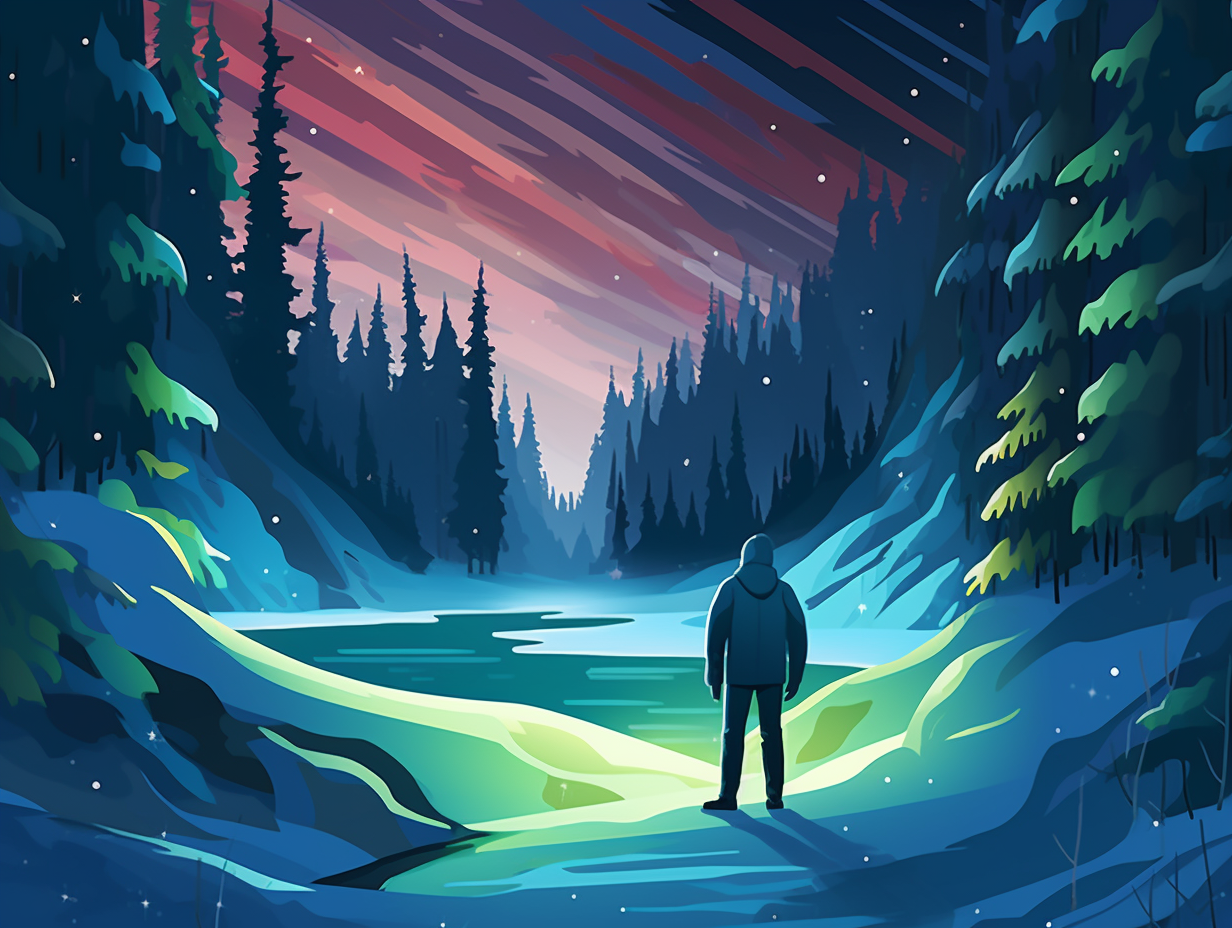
10. Arctic Smurf Wonderland
When Mother Nature binge-watches the Smurfs, you get the most epic blue scenery ever: the Arctic's "Blue Hour" phenomenon graces the Polar Night's twilight for several hours, turning landscapes into stunning azure realms and gifting photographers with unparalleled picturesque moments.
Source => arctic-council.org
11. Painting with Cosmic Rays
If you've ever wished to paint the sky using only cosmic rays and atmospheric molecules, nature's way ahead of you: The colors of the northern lights are determined by Earth's atmospheric molecules being excited by charged particles from the sun, with oxygen emitting yellow, green, and red hues, nitrogen producing blue and purplish-red glows, and gas giants like Jupiter, and Saturn boasting their own auroras due to magnetic fields and thick atmospheres.
Source => space.com
12. Aurora O'Clock Countdown
Start the countdown to the aurora o'clock: The most electrifying time to see Mother Nature's flashiest light show, the Northern Lights, is around midnight during Aurora season, which dazzles from late August to mid-April. Pro tip: Keep an eye on solar storm forecasts for the best visual fiesta, especially near the September and March equinoxes!
Source => capturetheatlas.com
13. STEVE, Aurora's Mauve Cousin
Next time you see a marvelous mauve in the sky, don't jump to conclusions—it might not be an intergalactic battle of Care Bears and My Little Pony hitching a ride on an aurora; this could very well be STEVE: a unique celestial phenomenon that appears as a ribbon of pink or mauve, with green columns resembling a picket fence. Unlike typical auroras, STEVE is caused by charged particles heating up high in the atmosphere outside the auroral zone and has citizen scientists snapping pics for research!
Source => nbcnews.com

